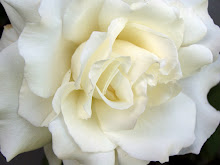
The basic idea is that you take a small or medium sized frame, put a picture in it and glue a few magnets on the back to make a cute refrigerator decoration. You can use any frame you like, but unless you want about 15 magnets on glued on the back of it, lighter is definitely better. Medium-sized (about 5”x7”) wooden frames or smaller (3”x5”) metal frames seem to be about the right weight.
To get the magnets on the frame, you will have to remove the stand on the back. Since most are made of cardboard, it is pretty easy. Once the cardboard part of the stand has been ripped off, you will be left with the metal hinge. The best way to get this off is to use a paper clip or needle to force out the pin that holds the hinge together. Once the pin is out, the main part of the hinge will come off and the back of the frame will be almost flat.

Placing one small magnet on each corner of the frame is usually enough. You can buy plain round magnets and superglue them on, or you can also find magnets that have a peel-off adhesive on one side. Once you think you have enough magnets on, stick the frame on the refrigerator and make sure it sticks. Give the frame a wiggle and if it feels a little loose, even if it doesn’t slide down, add a few more magnets.
The fun part is deciding what picture to put in. Postcards, greeting cards, CD sleeves, your own art,
 photographs—you can put anything in. Try going to a thrift store or flea market and looking through their collection of old postcards. Three of the magnets on my fridge have vintage 1950s postcards in them that I picked up at a local flea market.
photographs—you can put anything in. Try going to a thrift store or flea market and looking through their collection of old postcards. Three of the magnets on my fridge have vintage 1950s postcards in them that I picked up at a local flea market.This project makes a quick, fun Saturday afternoon project. And remember, the holidays are upon us. Because they are cheap to put together and you can make them unique as the person receiving them, these magnets make great gifts!












